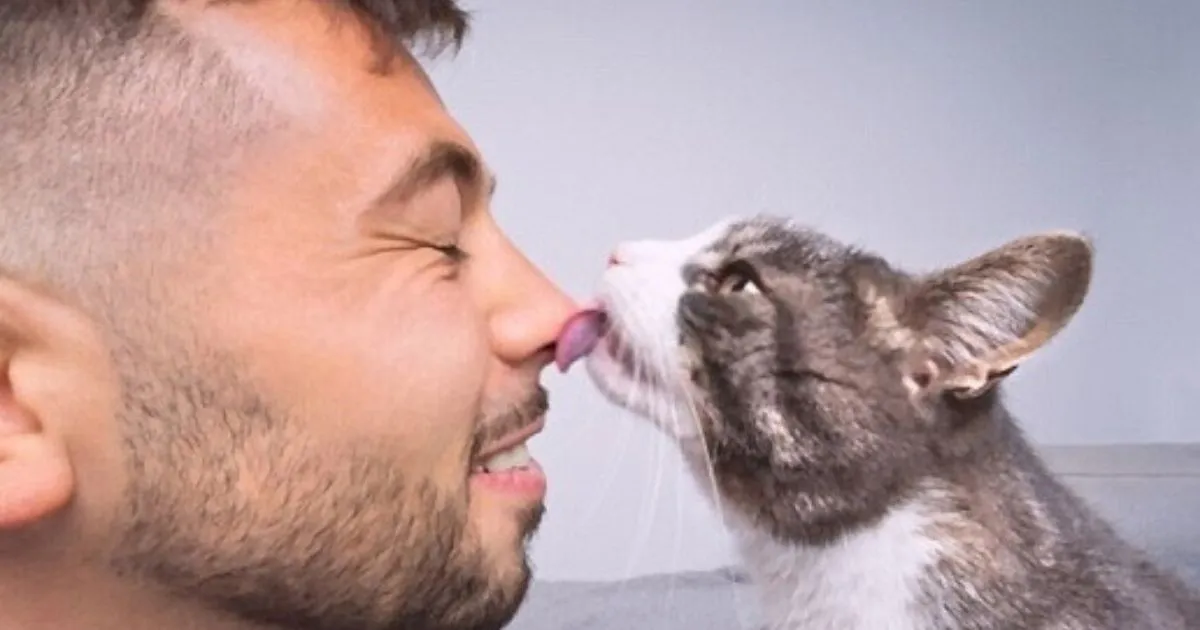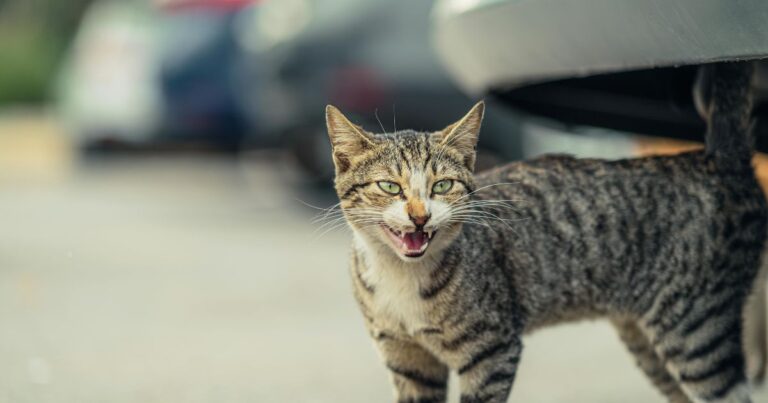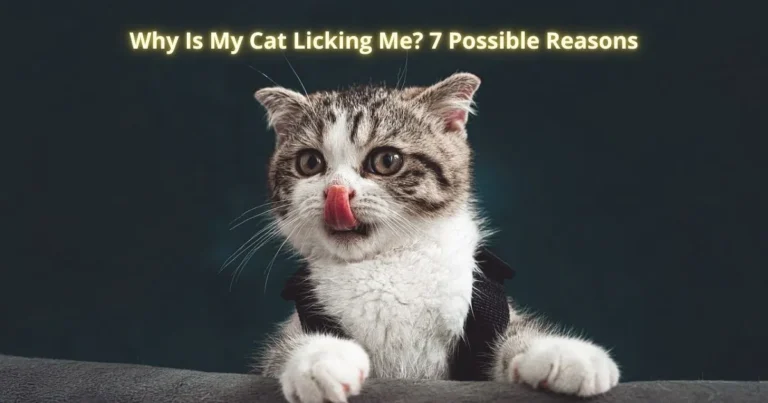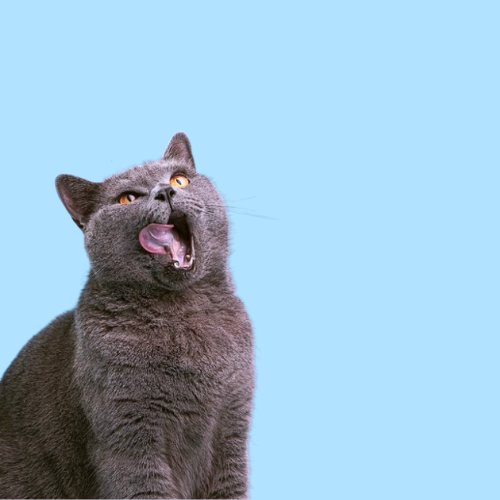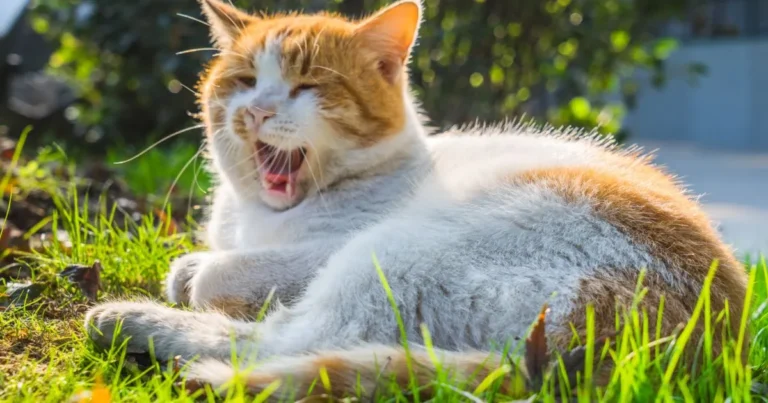Cat Licks My Face – Cute or Concerning? Here’s the Truth
Table of Contents
Ever wondered why your cat gives you a wet, sandpaper kiss? When a cat licks my face, I pause and think about its meaning. What seems cute can also puzzle pet owners.
Feline grooming is not random. When your cat licks your face, they’re sending a complex message. Experts say this act comes from their kitten days.
Understanding cat licking changes how we see their actions. It could mean love, marking territory, or something else. Each lick has a special message for us.
This journey into cat face licking will uncover their secret language. We’ll explore the science, psychology, and emotions behind this fascinating behavior.
Understanding the Science Behind Cat Licking Behavior
Cats talk to us in many ways, not just with their voices. Their licking habits show a world of animal bonding and social talk that might amaze you.
When your cat licks your face, it’s more than just affection. It’s a sign of their deep biological and social needs.
Scent Glands and Territorial Marking
Cats have special scent glands in their mouths. By licking, they send out messages that mark their territory, connect with others, and share their scent.
- Marking their territory
- Establishing social connections
- Sharing unique chemical signals
Natural Grooming Instincts
Licking is a key grooming habit cats learn from their moms. This natural instinct serves multiple purposes:
- Cleaning and maintaining hygiene
- Regulating body temperature
- Reducing stress
Social Bonding Through Licking
Licking is a strong way for cats to bond with each other and with humans. It lets them share their scent and form close connections.
“Licking is more than a behavior – it’s a language of love and trust for cats.” – Feline Behavior Experts
Knowing about these complex behaviors helps us see how deep our cat’s feelings are. It makes our bond with them even stronger.
Why Your Cat Licks My Face: Decoding the Message
Understanding cat communication is fascinating. When your cat licks your face, it’s not just a random act. It’s a complex way for them to communicate with you.
Cats lick faces as a way to talk to us. This behavior comes from their early life. Here are the main reasons for this interesting action:
- Affection and Bonding: Your cat sees you as part of their family, just like they do with their own.
- Seeking Attention: They might lick your face to get your attention and want to play or cuddle.
- Marking Territory: Cats have special scent glands in their mouths. When they lick you, they mark you as their own.
- Taste Exploration: Cats find the salt and oils on human skin tasty.
Knowing these signals can make your bond with your cat stronger. Each lick is a special way for them to show how they feel and want to connect with you.
Different cats lick faces for different reasons. Some do it because they trust you deeply. Others might be curious or playful. Watching your cat’s body language helps you understand their message better.
The Mother-Kitten Connection: Early Life Influences
To understand your cat’s licking, look into their early life. The start of cat-human connection happens in a kitten’s first weeks. It’s when they learn and bond.
Kittens learn important social skills from their mom in the first weeks. These early lessons shape how cats show love and talk to humans later.
Impact of Early Weaning
Early weaning can mess with a kitten’s social growth. Cats taken from their mom too early might face:
- Problems with grooming
- Issues with social limits
- Difficulty with emotions
- Challenges in complex communication
Social Learning and Development
Kittens learn by watching and imitating. They learn to show love, communicate, and handle social situations from their mom.
“A mother cat is the first and most important teacher in a kitten’s life.” – Feline Behavior Experts
Bonding Patterns in Adult Cats
The early years set the stage for adult cat relationships. Cats with strong mom bonds tend to be more loving and secure with humans.
Signs of Affection vs. Stress-Related Licking
Understanding cat communication is key. Licking can mean more than just affection. Your cat’s licking might tell you more than you think.
Affectionate licking shows certain signs:
- Gentle, rhythmic licking
- Relaxed body posture
- Soft purring with the licking
- Brief, intermittent contact
Stress-related licking has its own signs:
- Compulsive, repetitive licking
- Excessive licking of specific areas
- Tense muscle movements
- Flattened ears or dilated pupils
Excessive licking might show anxiety or stress. Cats lick themselves when they’re not comfortable or feel threatened.
“Cats communicate through subtle physical signals that require attentive interpretation.” – Dr. Feline Behavior Specialist
Knowing these signs helps you understand your cat better. Watch for context, how often it happens, and body language. This way, you can tell if your cat is showing love or if there’s a health issue.
Health Implications of Cat Licking Behavior
Cat licking is often a sign of love, but it can also pose health risks. Cat saliva has a mix of bacteria that can affect human health, especially for some people.
Knowing the health concerns helps you make better choices about grooming and interaction with cats. Not all cat licks are harmful, but some need extra attention.
Bacterial Concerns in Cat Saliva
Cat saliva has bacteria that can cause infections. Some of these risks include:
- Pasteurella multocida: A bacteria that can cause skin infections
- Bartonella henselae: Responsible for cat scratch disease
- Capnocytophaga canimorsus: Rare but serious bacterial strain
When to Consult a Veterinarian
See a vet if you notice:
- Excessive or compulsive licking behavior
- Changes in your cat’s oral health
- Unusual wounds or skin irritations
Risks for Immunocompromised Individuals
For people with weak immune systems, cat licking is risky. Immunocompromised individuals should exercise extra caution and limit face contact with cats.
Always put your health and your cat’s well-being first. Regular vet visits and good hygiene are key.
Creating Healthy Boundaries With Your Feline Friend
Managing cat-human interaction needs careful strategies. These strategies should respect your pet’s natural behaviors and keep you comfortable. It’s important to understand your cat’s behavior when setting boundaries.
Redirecting excessive face licking can actually make your bond stronger. Here are some ways to guide your cat’s affection:
- Gently move away when your cat begins licking your face
- Offer a soft toy as an alternative interaction point
- Use positive reinforcement to reward calm behavior
- Create consistent response patterns
Cats use physical contact to communicate. So, replacement behaviors are essential. When your cat tries to lick, try these alternatives:
- Interactive play with wand toys
- Gentle petting sessions
- Quiet companionship time
- Treat-based training
Animal behaviorists say patience and consistency are key. You aim to change how you communicate without losing your cat’s love.
Every cat is different. What works for one might not work for another. Watch how your cat reacts and adjust your approach as needed.
Alternative Ways Cats Show Love and Affection
Face licking is just the start when it comes to cat love. Cats show their love in many ways, like through body language and sounds. This shows how much they care for their owners.
There are many ways cats show love that might surprise you. They use both subtle body language and clear physical gestures.
Body Language Signals
Cats talk a lot through their body language. Some key signs of love include:
- Tail position held high with a slight curve at the tip
- Relaxed ears pointing forward
- Slow blinking, often called “cat kisses”
- Exposing their belly (a sign of ultimate trust)
Vocal Communications
Cats have a wide range of sounds that show love. Their voices tell us a lot about their feelings during animal bonding:
| Vocalization | Meaning |
|---|---|
| Soft purring | Contentment and comfort |
| Chirping or trilling | Greeting and excitement |
| Gentle meowing | Seeking attention and interaction |
Physical Gestures
Physical touch is a big way cats show love. Look for these signs:
- Kneading with their paws
- Rubbing against your legs
- Sleeping close to or on you
- Grooming you as a sign of trust
Remember, each cat shows love in their own special way. Understanding these signs can make your bond with your cat even stronger.
When Cat Face Licking Becomes Excessive
It’s important to know when your cat’s behavior is normal versus when it’s a problem. Excessive face licking can be a sign of deeper issues that need attention.
Cats may start licking compulsively for many reasons. These behaviors could be caused by:
- Anxiety or stress
- Neurological conditions
- Skin irritations
- Hormonal imbalances
Your cat’s constant face licking might show they’re feeling stressed or have a medical issue. Look out for these signs that their behavior is not normal:
- Constant licking that interrupts daily activities
- Licking accompanied by hair loss
- Visible skin changes or wounds
- Agitation or restlessness during licking
Seeing a vet is key if your cat’s behavior doesn’t change. A vet can check for health problems and find the right treatment.
“Early intervention prevents minor behavioral quirks from becoming serious health concerns.”
Conclusion
When your cat licks your face, it’s more than a simple gesture. It shows deep affection and reveals a lot about their feelings and personality. Each lick tells a story about their emotional state and how they bond with you.
Understanding cat communication takes patience and careful observation. Your cat uses face licking to show love, mark their territory, and connect with you. By understanding these signals, you can strengthen your bond with your pet.
Every cat is different. While some face licking is normal and loving, too much might mean they’re stressed or sick. Watch your cat’s body language and health closely. If you see unusual licking patterns, talk to a vet.
Embracing your cat’s unique way of communicating means loving their quirks and creating a safe space. Whether it’s a sign of bonding or just care, cherish these moments. They are special parts of your journey together.

